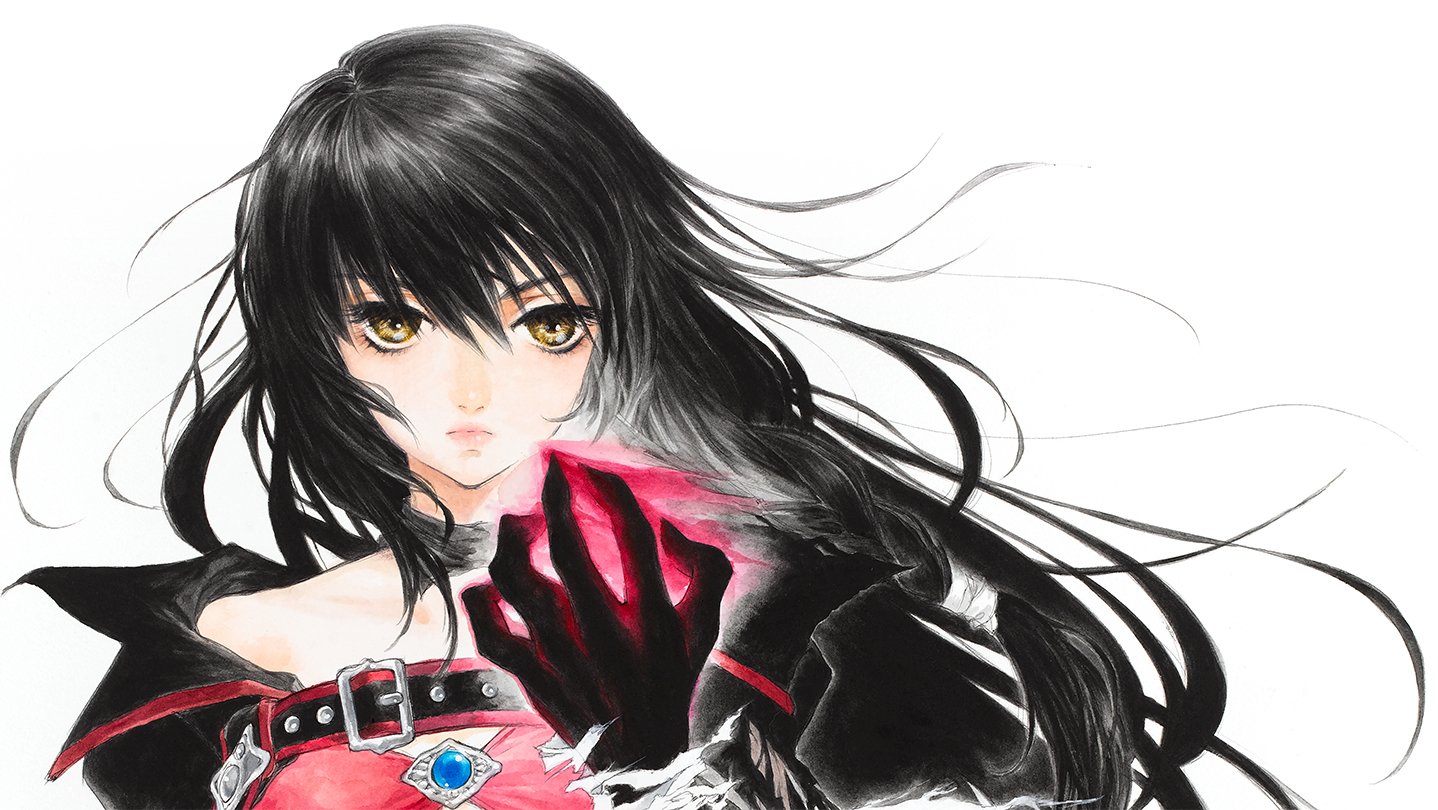
Summary:
Tales Of Berseria Remastered is bringing Velvet Crowe’s story of betrayal and revenge back into the spotlight, but this time with a twist that affects every region. Instead of keeping the original Japanese cutscene where Artorius impales Laphicet with his sword, Bandai Namco has decided that the remaster will use the overseas censored version as its base worldwide, including in Japan. That version replaces the physical impalement with an X shaped or cross shaped beam of light and a floating body, softening how directly the violence is shown while keeping the same tragic outcome. The decision is tied to long running concerns around ratings, the depiction of violence against a minor, and the desire to offer a single unified build across platforms. We walk through what actually changed in the scene, how it alters the mood of Berseria’s opening act, why the Japanese release is now aligned with the earlier western version, and how fans are responding. Along the way, we also highlight the confirmed platforms, global launch on February 27 2026 and the quality of life upgrades that might still make this remaster worth your time even if you would have preferred the original cut to remain untouched.
Tales Of Berseria Remastered and its new worldwide censorship twist
Tales Of Berseria Remastered takes a beloved 2016 action JRPG and dresses it up for modern systems, but one of the most talked about changes is not about resolution, frame rate or loading times at all. Instead, the spotlight has swung toward a single early story moment where Artorius kills Laphicet, a scene that sets Velvet Crowe on her path of vengeance. In the original Japanese PlayStation release, the camera showed Artorius driving his sword through the child and lifting the body up, a shocking introduction to the story’s central betrayal. For the international release, Bandai Namco already replaced that depiction with a more abstract shot built around a cross shaped energy strike. Now the remaster cements that approach by using the overseas censored version as the base for every region, including Japan, so players around the globe will see the same, toned down framing of the killing while still living through the same narrative consequences.
How the infamous Artorius and Laphicet scene originally played out
To understand why players are debating this decision so intensely, it helps to picture how the scene originally unfolded on Japanese hardware. In the first release, Artorius performs what feels like a deliberate, ritualistic execution as he impales Laphicet with his sword, raises the body and holds that pose long enough for the cruelty to sink in. The framing combines the physical act of impalement with the stillness of the surrounding environment, allowing Velvet’s horror and grief to collide with the raw violence on screen. There is no question about what happened or how brutal the act is, which is exactly why so many players remember that moment years later. It works as a narrative punch to the gut, turning a calm rural setting into a stage for betrayal and creating a sharp contrast that defines Velvet’s arc as someone who has already seen the worst humanity and the exorcists can offer.
How the overseas version softened the visual blow
For the western release on PlayStation 4 and PC, Bandai Namco made a different choice and adjusted the presentation of that same event before Berseria ever reached stores. Instead of showing a sword driven through a child’s chest and a body hanging from the blade, the cutscene switches to a cross shaped or X shaped blast of magical energy. Laphicet still dies, Artorius still commits the act and Velvet is still forced to watch, yet the camera no longer lingers on a clearly impaled body. The idea was to keep the emotional impact without centering the shot on explicit violence against a minor, which can be a flashpoint for ratings boards in several territories. At the time, many players only learned about the change when comparison videos surfaced online, and the debate around whether the new framing was better, worse or simply different has been simmering ever since.
Why the remaster now uses the censored version worldwide
Fast forward to 2025 and the announcement of Tales Of Berseria Remastered for Nintendo Switch, PlayStation 5, Xbox Series and PC, and Bandai Namco has made it clear that the overseas version is now the foundation everywhere. The official Japanese materials explain that some scenes will differ from the original domestic release because the remaster builds on the international version, holding up the Artorius and Laphicet cutscene as the key example. On a practical level, this lets the studio maintain a single build for all platforms and regions, which simplifies testing, certification and any future patching. It also keeps Berseria aligned with the Teen oriented image the series often aims for, rather than letting one region hold onto a more explicitly violent variant. For players in Japan, that means the remaster will be their first time officially receiving the censored framing instead of the original, uncensored one they knew from PlayStation 3 and 4.
Ratings boards and the problem of violence against minors
Behind this switch sits a quieter but very real concern about how ratings boards react to certain types of scenes, especially when they involve children. Violence is hardly new in anime inspired RPGs, yet there is a big difference between implying a tragic death and clearly showing a weapon driven through a young body. That line matters when a publisher is negotiating ESRB, PEGI and other regional classifications, since a harsher rating can push a game out of certain store placements or marketing channels. By building around the already approved overseas framing, Bandai Namco can avoid reopening that discussion for the remaster and keep Berseria Remastered aligned with earlier rulings. It is not just about optics either, as platform holders and retailers often have more restrictive policies around games that feature graphic harm to minors, which can quietly limit visibility even if a release technically passes age checks.
Global parity versus regional differences in storytelling
There is also a philosophical piece to this choice that goes beyond ratings stamps on the back of a box. Over the last decade, many publishers have moved toward global parity, where every region receives the same version of a game instead of a patchwork of edits and cuts. That approach can feel fair when you are used to western releases losing content that Japan keeps, but it can also work in the opposite direction. In Berseria’s case, the original Japanese version becomes the one that is trimmed back to match an international standard, trading away a sharper visual impact for a cleaner, more unified presentation. Some players welcome that move as a way to avoid confusion and endless comparison clips, while others see it as a loss of local flavor and a worrying signal that even domestic releases will be bent around the most conservative expectations in the global market.
What Japanese players lose and gain with the remaster
For players in Japan, Tales Of Berseria Remastered is a trade off between authenticity and convenience. On one hand, they lose a powerful shot that many fans still consider one of the most striking moments in the game, especially for how it frames the relationship between Velvet, Artorius and Laphicet. That original cutscene became part of how Berseria was discussed domestically, including debates about how far a mainstream JRPG could go in depicting cruelty. On the other hand, the remaster brings visual upgrades, performance improvements and bundled DLC to platforms that did not have them before, including Nintendo Switch. It also aligns Berseria with more recent series entries that avoid showing explicit harm to children as directly on screen. For some, that package still sounds attractive enough to justify picking the game up again, while others may decide to keep their old PlayStation copies close if they want to preserve the first version they experienced.
How the change affects Velvet’s story and the opening hour
Velvet’s arc in Tales Of Berseria hinges on the sense that she has every reason to hate what the world has taken from her, and that feeling is built in large part on the opening scenes. Swapping out the sword impalement for an X shaped beam does not alter the script or the basic sequence of events, yet it slightly shifts where the emotional weight sits. In the original version, the brutality of the act itself dominates your memory, reinforcing the idea that Artorius crossed a line that is almost impossible to forgive. With the censored framing, players rely more on dialogue, music and Velvet’s reactions to feel the same punch, since the camera pulls back from the most graphic image. For some players, that is enough, particularly if they value suggestion over explicit depiction. For others, it blunts the moment just enough that the opening hour loses a little of its raw, unforgettable sting.
Does the censored shot still work on a dramatic level
Whether the censored cutscene works dramatically is a question that players have been answering in different ways ever since the first western release. Many argue that the X shaped energy attack, combined with Velvet’s screams and the overall direction of the scene, still communicates the horror of what Artorius has done. The focus shifts toward symbolism, with the cross like shape echoing sacrifice and twisted ideals rather than a simple act of physical cruelty. Others feel that the original shot of the sword and the suspended body carried a sense of weight and reality that is harder to match with magical effects. For them, the new framing risks feeling like it is pulling its punches precisely when the story should be at its most uncompromising, especially in a tale that leans so heavily on themes of hypocrisy, control and how far people will go in the name of order.
How memory and first impressions shape this discussion
One tricky thing about judging the remaster’s approach is that most of us only carry one version of the scene in our memories. If you played the Japanese release at launch, the uncensored impalement probably feels like the real Berseria, while players who discovered the game on Steam or a western PlayStation console may only know the X shaped beam. That first impression colors every later comparison, especially when clips of the other version start circulating online. The remaster freezes that situation in place by choosing a single approach going forward, meaning that new players in 2026 will grow up with the censored framing as their baseline. Over time, that may slowly tilt the conversation as more people see the energy based version as normal, while the original becomes a curiosity that only long time fans and archival footage still reference.
How the community is reacting to worldwide censorship
As soon as Bandai Namco confirmed that Tales Of Berseria Remastered would be based on the overseas build and that Japan would inherit the same censored scene, reactions from fans spread across social media, forums and comment sections. Some players shrugged the news off as a minor change in a long adventure, pointing out that the story, combat system and character arcs remain intact from start to finish. Others voiced frustration that a domestic release now has to conform to decisions originally made for a different audience and a different ratings landscape. There are also long time Tales followers who see this as one more example in a broader pattern of cautious editing, where potentially controversial scenes get trimmed down before they ever have a chance to stand on their own merits. For them, the decision stings precisely because Berseria built a reputation as one of the darker and more mature entries in the series.
Preservation, trust and the question of future remasters
Beyond immediate reactions, the situation raises bigger questions about how remasters handle scenes that once pushed boundaries, especially when those scenes involve touchy subjects. Players who care about preservation worry that if every new release quietly uses the safest possible cut, original versions will slowly vanish from legal channels, surviving only in old hardware, second hand discs and fan edited videos. That sense of loss can bleed into trust, with some fans wondering whether future projects in the Tales Remaster Project will also sand down rough edges in the name of a smoother age rating. On the other side, some argue that sensitivities change over time and that studios have to balance respecting original intent with making sure new releases land in a world that pays more attention to how certain images affect players. Tales Of Berseria Remastered sits right in the middle of that tug of war, becoming a case study in how these choices ripple beyond a single cutscene.
Release timing, platforms and what to expect on Nintendo Switch
All of this discussion is happening against the backdrop of a remaster that is otherwise following a familiar pattern for Bandai Namco’s big JRPGs. Tales Of Berseria Remastered is slated to launch worldwide on February 27 2026 for Nintendo Switch, PlayStation 5, Xbox Series X|S and PC through Steam, giving both console and PC players another chance to experience Velvet’s journey in a more polished package. The Switch version in particular stands out because the original Berseria never made it to Nintendo hardware, so this will be the first time many handheld focused players can dive into this part of the Tales timeline without turning to another platform. While the censored opening is shared across all systems, the core gameplay loop, flexible combat and story structure are the same ones that earned Berseria its reputation back in 2016. For anyone who missed it the first time around, the remaster offers a convenient way to catch up.
Quality of life upgrades beyond the controversial scene
It is also worth remembering that Tales Of Berseria Remastered is not just a vehicle for a single cutscene decision. Bandai Namco has outlined a set of quality of life upgrades designed to make the long JRPG journey smoother, such as destination icons that make it easier to know where to head next, encounter toggles that let you manage field battles more comfortably and earlier access to the Grade Shop for tweaking difficulty and rewards. Visual touch ups, performance improvements and bundled DLC costumes and items add an extra layer of value, especially for players who like to experiment with different looks for Velvet and her allies. These improvements do not erase the debates around censorship, but they do shape the day to day feel of play, which is what most players will be dealing with hour after hour. In that sense, the remaster tries to balance a controversial structural choice with a suite of smaller upgrades aimed at making everything else feel better.
Should you still play Tales Of Berseria Remastered in 2026
So where does that leave someone who is considering picking up Tales Of Berseria Remastered on Switch or another platform when it launches in February 2026. The answer depends largely on how you weigh narrative presentation against everything else. If you see the original impalement scene as essential to Berseria’s identity, you might prefer to track down an earlier Japanese PlayStation version and keep that experience as your reference point. If you are mainly interested in Velvet’s story, the series lore and the satisfying flow of its combat system, the censored framing may feel like a compromise you can live with, especially with the convenience of modern hardware and added refinements. Either way, going in with clear expectations about what has changed and why helps avoid surprises. That way you can decide for yourself whether this version of Berseria still delivers the emotional punch you are looking for or whether the missing shot is a deal breaker.
Conclusion
Tales Of Berseria Remastered arrives in 2026 as both a celebration of one of the stronger Tales entries and a reminder of how tricky it can be to bring older games into a new era of expectations and sensitivities. By choosing to base the remaster on the overseas censored version, Bandai Namco has ensured that every region, including Japan, will see the same cross shaped killing of Laphicet instead of the original impalement shot. That move simplifies ratings and global parity but also changes how some players read Velvet’s motivations and the tone of the opening act. At the same time, the remaster delivers real benefits through visual upgrades, performance tweaks and bundled extras, especially for Nintendo Switch owners who never had access to Berseria before. In the end, we are left weighing a single yet pivotal change against a long list of improvements, deciding whether this path forged by vengeance still resonates strongly enough when one of its most brutal images has been softened for everyone.
FAQs
- What exactly was censored in Tales Of Berseria Remastered
- The key change involves the cutscene where Artorius kills Laphicet near the beginning of the story. In the original Japanese release, players saw Artorius impale Laphicet with his sword and lift the body into the air. The remaster instead uses the overseas version, where Laphicet is struck by an X shaped or cross shaped beam of energy and shown floating, removing the direct shot of a blade driven through a child while keeping the same narrative outcome.
- Is the Japanese version of Tales Of Berseria Remastered different from the western one
- No, Bandai Namco has confirmed that the remaster uses the overseas version as its base for all regions, including Japan. That means the censored Artorius and Laphicet scene will appear in exactly the same form worldwide, and Japanese players will not have access to the original impalement shot in this new release. Other story events, systems and features are also shared across regions, creating a unified global build.
- Why did Bandai Namco choose the censored version for the remaster
- The decision appears to be driven by a mix of practical and regulatory reasons. Using the already approved overseas build helps Bandai Namco avoid reopening ratings discussions around graphic violence against a minor, which can affect age classifications and marketing options. It also simplifies development and support by letting the team maintain one shared version of the game instead of juggling different regional cuts, even if that means sacrificing the original Japanese framing of the scene.
- When does Tales Of Berseria Remastered release and on which platforms
- Tales Of Berseria Remastered is scheduled to launch worldwide on February 27 2026 for Nintendo Switch, PlayStation 5, Xbox Series X|S and PC via Steam. The Japanese release lands one day earlier on February 26, but the game itself is the same across regions aside from language options. For Nintendo players, this marks the first time Berseria is available on a Switch system, giving handheld fans a new way to experience Velvet Crowe’s story.
- Does the censorship change mean the story is less impactful overall
- The core script, character arcs and combat systems remain unchanged, so the broad beats of Velvet’s journey are intact. However, the shift from a clearly shown sword impalement to an X shaped energy attack does alter how the opening betrayal lands for some players. Those who value symbolic framing may find the censored cutscene perfectly effective, while others who appreciated the original’s harsh visual honesty may feel that a small but important edge has been lost, especially in a tale built on themes of cruelty and revenge.
Sources
- Japan: Tales Of Berseria Remastered will include original’s overseas censorship, My Nintendo News, November 21, 2025
- Tales of Berseria Remastered will be censored worldwide, Nintendo Everything, November 20, 2025
- Tales of Berseria Remastered to use international censored version in Japan too, Automaton Media, November 20, 2025
- A path forged by vengeance in Tales of Berseria Remastered coming February 2026, Bandai Namco Entertainment, November 19, 2025
- Sorry Xillia 2, Tales Of Berseria Is The Next Remaster From Bandai Namco, Nintendo Life, November 20, 2025














